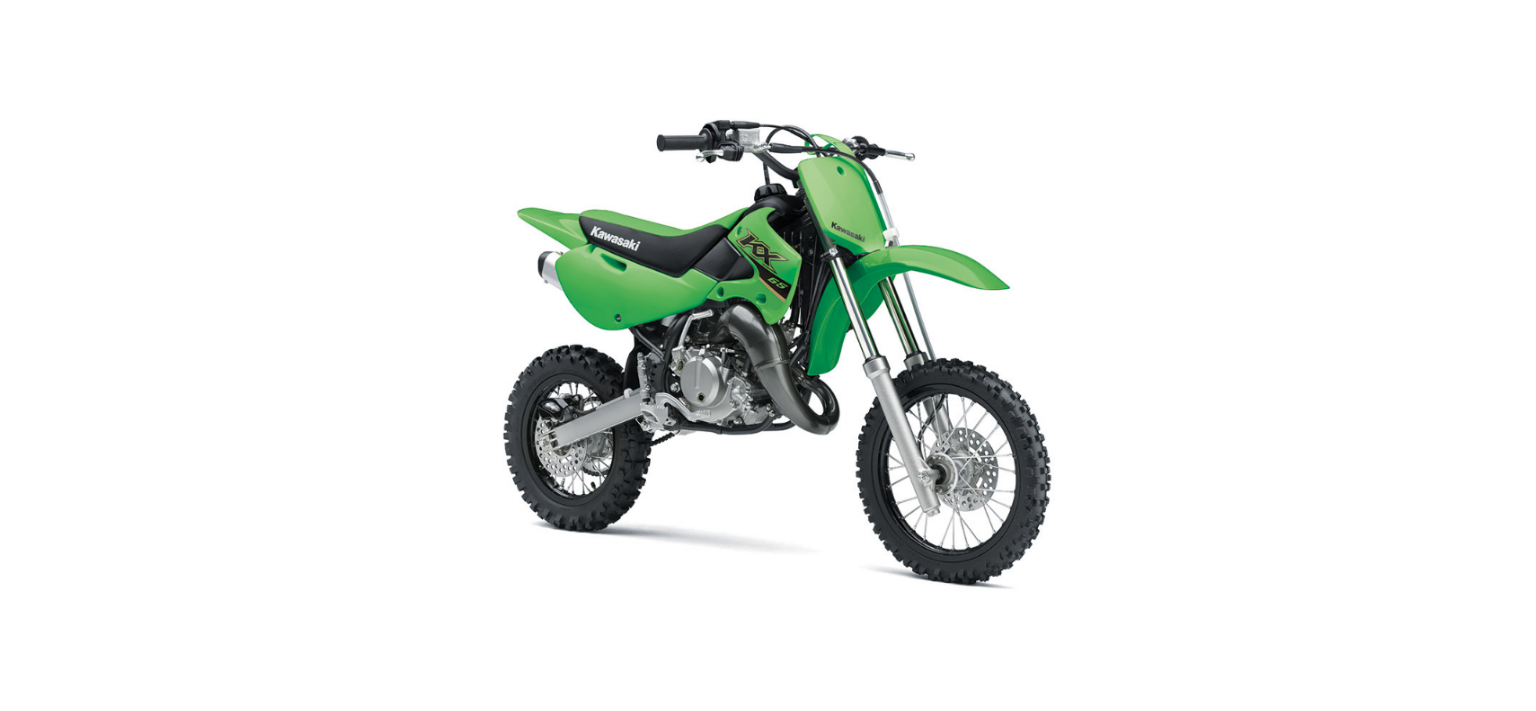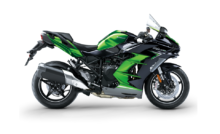2022 Kawasaki KX65 Suspension Tuning Owners Manual




2022 Kawasaki KX65 Suspension Tuning


Suspension Tuning
Introduction
No area of machine adjustment is more critical than proper suspension tuning. An improperly tuned suspension will keep even the best rider from attain- ing the full benefit of his machine’s ability. Match the suspension to the rider and the course conditions. WHILE TUNING THE SUSPENSION, KEEP THE FOLLOWING IMPORTANT POINTS IN MIND:
- If the machine is new, “break in” the suspension with at least one hour of riding before making any setting evaluations or changes.
- The three major factors which must be considered in suspension tuning are RIDER WEIGHT, RIDER ABILITY, and TRACK CONDITIONS. Additional influences include the RIDER’S STYLE and PO- SITIONING on the machine.
- Before changing the suspension settings, test changing your riding posture or position to check whether it is the cause of the problem or not.
- It is a wise practice to adjust the suspension to suit the rider’s strong points. the corners, adjust the suspension to allow fast cornering.
- Make setting changes in small increments. A little bit goes a long way, and a setting is easily overadjusted.
- The front and rear suspension should always be balanced; when the one is changed, the other one might need to be changed similarly.
- When evaluating suspension performance, the rider must make every effort to ride consistently and to recognize the effects of his input. Such things as changes in rider position and increasing fatigue may lead to incorrect judgments about necessary adjustments.
- When the proper settings have been determined for a particular track, they should be written down for reference when returning to the same track.
- Lubricate the bearings in the swingarm and UNI
- TRAK® linkage after break-in and after every 5 races to prevent friction from affecting suspension performance.
Front Fork
Front Fork Oil Level
The fork oil level in the fork tube is adjustable. A change in the fork oil level will not affect the spring force much at the top of fork travel, but it will have a great effect at the bottom of it. .When the oil level is raised, the air spring becomes more progressive, and the front fork action feels “harder in the later stage of fork travel, near the bottom. When the oil level is lowered, the air spring be- comes less progressive, and the front fork action does not feel as “hard” in the later stage of fork travel. Changing the fork oil level works effectively at the end of fork travel. If fork bottoming is experienced, raise the fork oil level in 10 mm (0.4 in.) increments.This will change the secondary spring rate.
Front Fork Oil Level Adjustment
Adjust the front fork oil level (see Fork oil level adjustment under Front suspension in the Maintenance and Adjustment chapter).
Troubleshooting Improper Settings
Listed below are some symptoms of improper suspension settings and the most likely means of correcting them. The proper settings can be achieved by applying the information given in this chapter in a scientific, methodical manner. This does not mean, however, that you must be a scientist or trained technician to succeed. Simply take time to think about the changes you believe are necessary, check them against the symptoms and cures described here, make the changes in small increments, and take note of the changes and their effects.
Front Fork Improper Adjustment Symptoms:
Too Hard
Spring too stiff
- Spring too strong
- Oil level too high
- Oil viscosity too low
Suspension stiffens at the end of the fork stroke
Fork oil level too high
Spring OK, but suspension too hard:
- Oil viscosity too low
- Fork oil deteriorated
Too Soft
The front fork dives excessively during braking and deceleration:
- Fork oil level too low
- Springs too soft
- Oil viscosity too high
- Fork oil deteriorated
- Rebound damping improperly adjusted
Rear shock absorber improper adjustment symptomms
Too Hard
Suspension too stiff
Spring too hard
Springing OK but suspension too hard
- Unbalance between the spring and the rebound damping (rebound damping too low)
- Spring preload too high (hard)
Too Soft
Bottoming occurs on landing after a high jump (otherwise OK)
- Spring preload too soft
- Spring too soft
- Shock absorber oil deteriorated
Standard Settings
From the factory, the machine is set up for a medium-weight rider with intermediate riding ability.Hence, if the actual rider weighs considerably more or less, or if his riding experience and ability are much above or below the intermediate level, it is likely that a few basic suspension adjustments will be necessary.
Basic Readjustment of the Suspension
Suspension Tuning According the Type of Course
Begin the actual on-track testing and evaluation
after making these preliminary adjustments.
Bear in mind the following points when readjusting
the suspension.
- Always make changes in small steps.
- The rider must be consistent in evaluating suspension performance.
- A change in the front suspension might require one in the rear suspension, and vise versa.
Front and Rear Suspension Compatibility Inspection
Use this procedure to determine the suspension is balanced reasonably well.
- Hold the motorcycle upright (remove the side stand).
- While standing next to the machine, lightly pull the brake lever, place one foot on the footpeg closest to you, and push down hard. If the motorcycle stays level as the suspension is compressed, the spring rates are well balanced.
- Sit astride the motorcycle, take a riding posture and check that the machine is in a horizontal position. If one end drops noticeably more than the other, the front and rear are not compatible and must be readjusted to achieve a better balance.
Although this is one of the most effective adjustment procedures, suspension settings may vary de- pending on the conditions at the track and the rider’s preferences. Front and Rear Suspension Troubleshooting
Front End Surges Downhill or During Acceleration Out of Corner
The front suspension is too soft.
- Increase the fork oil level by 10 mm (0.4 in.).
- Use an optional harder spring.
Front End “Knifes” or Oversteers in Turns (Tends to Turn Inward)
The front suspension is too soft.
- Increase the fork oil level by 10 mm (0.4 in.).
- Increase the rebound damping.
NOTE
Heavier or expert riders may needa harder spring. Front End Pushes or “Washes Out” in Turns (Front Wheel Tends to Push Outward Rather than “Bite” in a Turn)
The front suspension is too stiff.
- Decrease the rebound damping.
- Decrease the fork oil level by 10 15 mm (0.4 0.6 in.).
- Use a softer spring
NOTE
Lighter or less experienced riders may need a softer spring.
Front End Does Not Respond to Small Bumps in Sweeping Turns
The front suspension is too hard.
- Decrease the rebound damping.
- Decrease the fork oil level by 10 15 mm (0.4 0.6 in.).
- Use a softer spring.
Rear End “Kicks” When Braking on Bumps
The rear shock absorber rebound damping may be too low. Increase the rebound damping.
Rear Tire Does Not “Hook Up” Out of Corners (Lack of Traction Coming Out of Turns)
The rear shock absorber may be too stiff.
- Decrease the rear shock absorber spring preload.
- Use a softer spring (Lightweight Rider Only).
Fork Bottoms Off After a High-speed Jump (may due to improper riding posture)
The rebound damping is too soft or the spring is too hard.
- Increase the rebound damping.
- Decrease the rear shock absorber spring preload
Front and Rear Ends Bottom Off After a High-speed Jump (harsh bottoming occurs once or twice per lap)
The front suspension is too soft.
- Increase the fork oil level by 10 mm (0.4 in.).
- Use a harder fork spring. The rear suspension is too soft.
- Increase the rear shock absorber spring preload.
- Use a harder spring.
NOTE
Check the front and rear suspension compatibility after making any adjustment.
Rear End Bottoms at Low Speed
Increase the spring preload up to maximum.
Rear End Bottoms After 3 or 4 Successive Jumps
Decrease the rebound damping.
NOTE
- The rear shock absorber behavior on this machine may mislead some riders.
- The rear shock absorber bottoms (due to full stroke) when the spring and damping are over come by the total weight of the machine and rider.
- A bottoming sensation (even though the machine is actually not bottoming) may be caused by ma- chine weight and the inability of the rider to over come an overly stiff spring or excessive damping.
- Observe the rear end jumps and try lowering the spring preload and damping ifit does not approach bottoming.
Recent Posts
VW Jetta Engine Fuse Box Diagram
Access the comprehensive 2010-2018 VW Jetta Passenger Fuse Box Diagram to troubleshoot electrical issues effectively.…
VW Jetta Passenger Fuse Box Diagram
Explore the comprehensive VW Jetta Passenger Fuse Box Diagram to troubleshoot electrical issues effectively. Understand…
2023 Ford F-150 Lightning Fuse Box Diagram
Under Hood Fuse Box Location Remove the front luggage compartment cover. Under Hood Fuse Box…
2022 Kawasaki NINJA H2 SX SE Brake Lever Adjuster Owner’s Manual
2022 Kawasaki NINJA H2 SX SE Brake Lever Adjuster Owner's Manual NOTICE Only adjust the front…
2023 Land Rover Range Rover Evoque Exiting The Vehicle Owners Manual
2023 Land Rover Range Rover Evoque Exiting The Vehicle SINGLE LOCKING WARNING Before exiting the…
2023 Land Rover Range Rover Evoque Front Seats Owners Manual
2023 Land Rover Range Rover Evoque Front Seats FRONT SEAT SAFETY Make sure to read…
